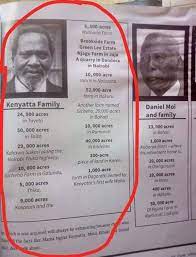1. Omutilu: Nekoye, Nabwami, bulicho, Nakhanu, Nabwayi, Nang’oma, Nakhabale, basinga bukhi, babatikitia likulu liamwenyamwenya
Bamutilu came to the present Bukusu land by use of a rope across a large river. They are a leadership clan and also with vast wealth in cattle and livestock. They play a war drum, such as that which Mukite wa Nameme played to unite Bukusu land. They are skilled rainmakers and belong to Basilikwa group of clans; that is descendants of Silikwa, who was one of the sons of Mubukusu who led the people in Esengeli during their early migration.
Omuchemwile: Omukikayi, omusiandete, omusiang’oma, omusyanyungu, silimbakha
Bachemwile are naturally very captivating conversationalists (silimbakha), thus they talk a lot. Their ancestors include Watambamala, Muchube and Situlungu who were tough and rough men. They belong Bakikayi cluster, group of clans who sojourned in Kikayi Hills during their migration.
3. Baengele: Nambengele Nalukhamba, Nabulusya, owaabina nebusiele. Tundwe, Nasiloma, Mwalie owecha na ekutusi.
Omuengele is not only naughty and stubborn but also a good talker and a people-person. The late Wamalwa Kijana is an example of an eloquent speaker from the clam. Omuengele is also bold and can elude an enemy while it is dawn. He is a ruler (leadership clan) who came with the elders’ robe -ekutusi. He pays allegiance to Bamwalie cluster; those groups of clans who came by the Mwalie Hills.
Banyangali: Basilikwa, Barwa Bayoboyi, Khukhwakenda ne chikhendu mukanda, balicha ngwe.
Omunyangali is a descendant of Silikwa having walked with other clans after the Silikwa dispersal wars. Note; they fought Kalenjin adversaries (Bayoboyi). Due to close association to Barwa, Banyangali adopted the practice of khulicha, a top secret ritual whose symbol of the leopard. Due to khulicha (widely practiced within Mwalie clans), it is highly likely that Banyangali have deep links to Bamwalie.
Babichu: Namwalie, wanakhuchuru
They have allegiance to Bamwalie cluster; those who lived around Mwalie hills and adopted much of Barwa way of life. They are also elusive as the ekhuchuru bird- the African francolin.
Bakhwami: Nabukhwami, enda ye Wandinda, Kukali, Kutusi, Namachanja, Machabe.
Bakhwami are a leadership clan and their elders wear the royal insignia; ekutusi the robe and lichabe, the iron armband. Due to maternal ties, they are related to Babuulo.
Bakhoma: Nawanga, Nalubia, Nasakami; Omukhoma salia engokho They belong to the group of clans that lived around Kikayi Hills and profess Nawanga as their maternal ancestor. Due to some occurrences in the clan’s history, they abstained from eating chicken, hence Bakhoma sabalia engokho.
Babwoba: Omwanamusime
While it is not captured in their introduction, Babwoba have special significance in Bukusu circumcision. A story goes that one day, two old men from the clan were sent to find a mudding place (sitosi/sitabicha/silongo) where initiates would be applied mud just after circumcision. Upon reaching the riverside, the two men found two things; a snake and a bird; which was regarded as good omen. Ever since, circumcision candidates from Babwoba are the first ones to be mudded before everyone else.
Bamakhuli: Batachoni ngololi, maabo, bulicho
Omumakhuli branched off from Batachoni clan-fold (Bayumbu). No meaningful translation can be realized from the other words.
Bakobolo: Bemukwena, bamatisi, wekoye, likhui, khukhwanaba ching’eni, khwanaba ne lulumbe
The introduction strongly suggests that Omukobolo was a skilled fisherman whose livelihood depended on fishing. He coexisted with chikwena (crocodiles), built dams (kamatisi) and feasted on different types of fish. It is also hinted that they were skilled medicine-men and women. Finally, they belong to Bamwalie group of clans, those who came to present Bukusu land through Mwalie Hills.
Basituyi: Basilikwa, Njoyobi, Namurwa, Simatwa, Kikayi, Banianiambi Basilimatakho, Bama Embayi ne chikhendu sikanda
Omusituyi was part the clans that came last after the dispersal wars of Silikwa. He pays allegiance to Namurwa (mother of Mubukusu and Mukisu). Their ancestors had a slim backside and walked with pride and cheerfulness. Out of Silikwa and Embayi, Basituyi came carrying chikhendu (raffia palms) which is a symbol of enormous wealth in cattle.











